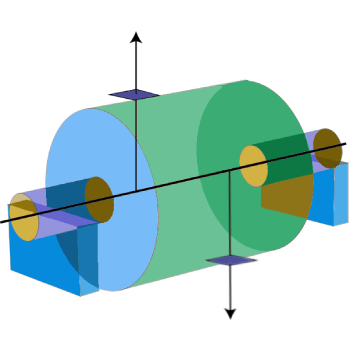What is couple unbalance?

A couple of unbalances may be found in a rotor whose diameter is less than 7 to 10 times its width. In the case of a cylinder, it is possible to have two equal masses placed symmetrically about the center of gravity, but positioned at 180° from each other. The rotor is in static balance (there is no eccentricity of the center of gravity), but when the rotor turns, the two masses cause a shift in the inertia axis, so that it is no longer aligned with the rotation axis, leading to strong vibrations.
The unbalance can only be corrected by taking vibration measurements with the rotor turning and adding correction masses in two planes. Couple unbalance rotor is stationary, the end masses balance each other. However, when it rotates, a strong unbalance is experienced.
Couple Unbalance. Couple unbalance is a condition in which the principle axis intersects with the shaft axis at the center of mass (which means there is no static unbalance) but is inclined at an angle to the bearing axis, as shown in Fig.
Couple unbalance (also called moment unbalance) has equal unbalances spaced 180° from each other, at opposite ends. Generally, couple unbalance is the result of each bearing plane not being precisely perpendicular to the rotational axis. When the rotor spins, it vibrates with a twisting motion. Couple unbalance cannot be corrected in one plane; two corrections are required.





